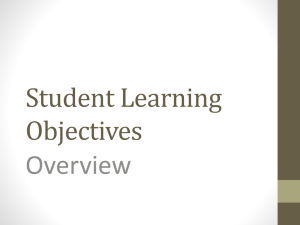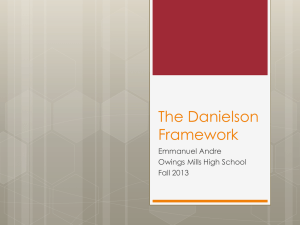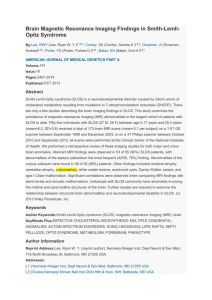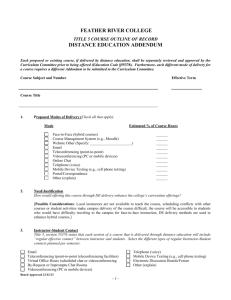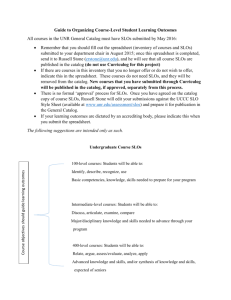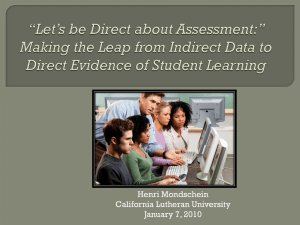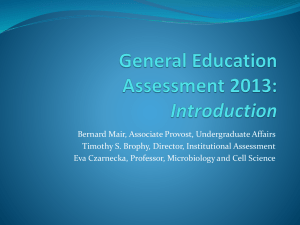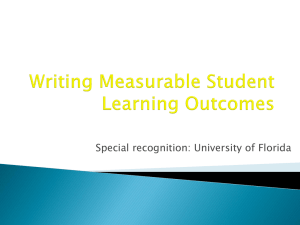Math_Physical Sciences Dept_agenda_May 2_2014_SLOs
advertisement
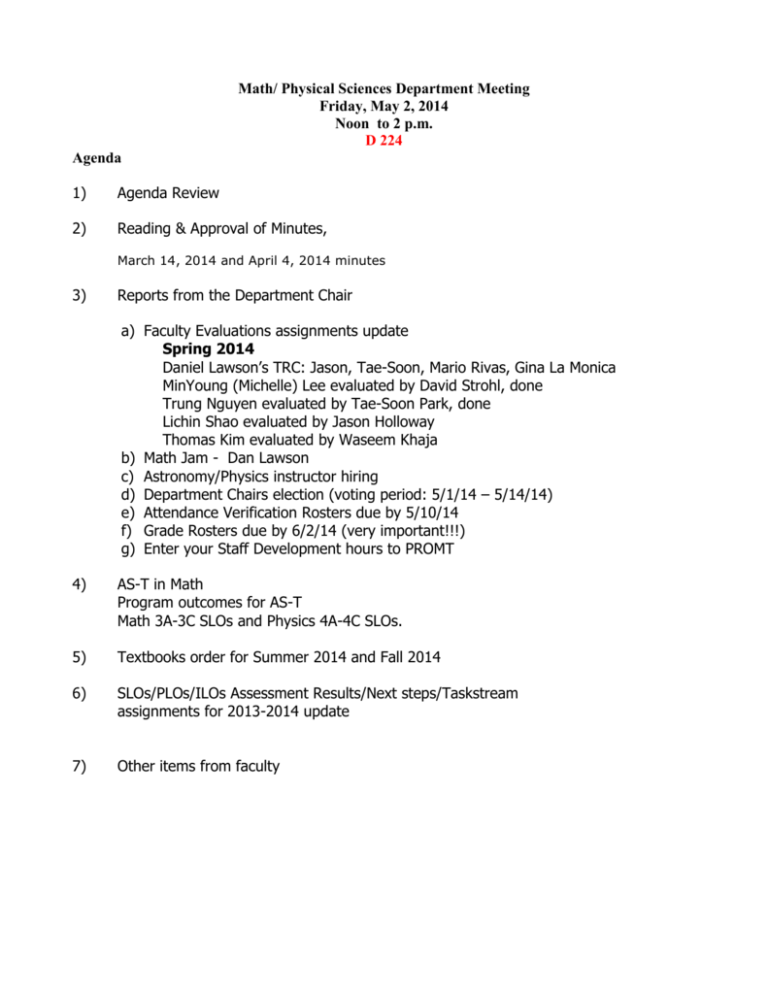
Math/ Physical Sciences Department Meeting Friday, May 2, 2014 Noon to 2 p.m. D 224 Agenda 1) Agenda Review 2) Reading & Approval of Minutes, March 14, 2014 and April 4, 2014 minutes 3) Reports from the Department Chair a) Faculty Evaluations assignments update Spring 2014 Daniel Lawson’s TRC: Jason, Tae-Soon, Mario Rivas, Gina La Monica MinYoung (Michelle) Lee evaluated by David Strohl, done Trung Nguyen evaluated by Tae-Soon Park, done Lichin Shao evaluated by Jason Holloway Thomas Kim evaluated by Waseem Khaja b) Math Jam - Dan Lawson c) Astronomy/Physics instructor hiring d) Department Chairs election (voting period: 5/1/14 – 5/14/14) e) Attendance Verification Rosters due by 5/10/14 f) Grade Rosters due by 6/2/14 (very important!!!) g) Enter your Staff Development hours to PROMT 4) AS-T in Math Program outcomes for AS-T Math 3A-3C SLOs and Physics 4A-4C SLOs. 5) Textbooks order for Summer 2014 and Fall 2014 6) SLOs/PLOs/ILOs Assessment Results/Next steps/Taskstream assignments for 2013-2014 update 7) Other items from faculty Cut and pasted Jennifer’s suggestions & add Math 3B, 4): Math 3A SLOs 1) Compute derivatives of functions using a variety of techniques for graphical analysis 2) Apply the concept of anti-differentiation to solve basic integration problems. 3) Construct and solve mathematical models involving related rates and optimization (maximum and minimum problems). 4) Model natural phenomena using logarithms and exponentials 5) Analyze the properties of inverse trigonometric functions, their derivatives and anti-derivatives Math 3B SLOs 1) Utilize integration to determine areas, volumes, lengths, and work. 2) Apply intermediate integration techniques to solve an expanded class of integrals. 3) Solve problems using parametric and polar representations of functions. 4) Use power series approximation of functions to predict behavior of real world phenomena. Math 3C SLOs 1) Apply properties of vector operations, the dot product, the cross product of vectors to determine force, projectile motion, navigation, shared load, work, torque, distance. 2) Utilize differentiation and integration of vector valued functions to find velocity, acceleration, tangent and normal vectors, arc length and curvature. 3) Apply Green’s Theorem, Stokes’ Theorem and divergence theorem to model hydrodynamics problems. Physics 4A SLOs (Laney) 1. Students explain and discuss both verbally and in written language the physics concepts listed in course content, as well as their relevance to everyday events and circumstances in a broad interdisciplinary context. 2. Students use algebra, trigonometry, and calculus to set up mathematical descriptions of physical systems and to calculate measurable quantities that provide an understanding of the physical environment in terms of the concepts listed in the course content. 3. Students set up laboratory equipment safely and efficiently, plan and carry out experimental procedures, identify possible sources of error, implement techniques that enhance precision, reduce and interpret data, and report verbally and in written language the experimental data, results, and assessment of reliability. Physics 4A SLOs (COA) 1. Students discuss the concepts of physics, and apply them to situations relevant to the course. 2. Students develop descriptions of physical systems using mathematics and calculate measurable quantities. Students set up laboratory equipment safely, plan and carry out experimental procedures, identify possible sources of error, reduce and interpret data, and prepare clear written reports. 3. Physics 4B SLOs (Laney) 1. 2. 3. Students explain and discuss both verbally and in written language the physics concepts listed in course content, as well as their relevance to everyday events and circumstances in a broad interdisciplinary context. Students explain and discuss both verbally and in written language the physics concepts listed in course content, as well as their relevance to everyday events and circumstances in a broad interdisciplinary context. Students set up laboratory equipment safely and efficiently, plan and carry out experimental procedures, identify possible sources of error, implement techniques that enhance precision, reduce and interpret data, and report verbally and in written language the experimental data, results, and assessment of reliability. Physics 4B SLOs (COA) 1. 2. 3. Students discuss the concepts of physics, and apply them to situations relevant to the course. Students develop descriptions of physical systems using mathematics and calculate measurable quantities. Students set up laboratory equipment safely, plan and carry out experimental procedures, identify possible sources of error, reduce and interpret data, and prepare clear written reports. Physics 4C SLOs (Laney) 1. 2. 3. Students explain and discuss both verbally and in written language the physics concepts listed in course content, as well as their relevance to everyday events and circumstances in a broad interdisciplinary context. Students use algebra, trigonometry, and calculus to set up mathematical descriptions of physical systems and to calculate measurable quantities that provide an understanding of the physical environment in terms of the concepts listed in the course content. Course content consists of optics, interference, relativity, quantum physics, atoms, molecules, solids, nuclei, particle physics, astrophysics. Students set up laboratory equipment safely and efficiently, plan and carry out experimental procedures, identify possible sources of error, implement techniques that enhance precision, reduce and interpret data, and report verbally and in written language the experimental data, results, and assessment of reliability. Physics 4C SLOs (COA) 1. 2. 3. Students discuss the concepts of physics, and apply them to situations relevant to the course. Students develop descriptions of physical systems using mathematics and calculate measurable quantities. Students set up laboratory equipment safely, plan and carry out experimental procedures, identify possible sources of error, reduce and interpret data, and prepare clear written reports.
